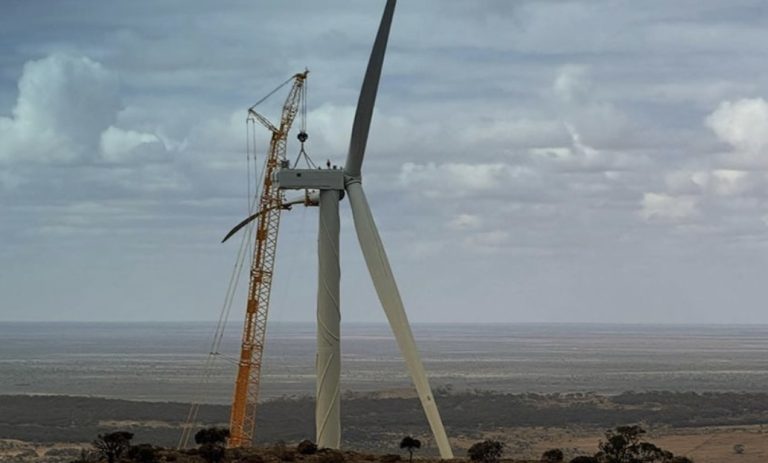South Australia Wind Projects Set to Achieve Financial Close Amid Victoria’s Solar Hybrid Restrictions
Two wind energy initiatives in South Australia are set to become the first beneficiaries of the Capacity Investment Scheme (CIS) to achieve financial closure, marking a significant turnaround for an industry that has faced investment challenges in 2025.
Aula Energy, a renewable energy and storage developer backed by Macquarie, announced on Thursday its expectation to secure financial closure for its 257 megawatt (MW) Carmody’s Hill project by the year’s end, with construction slated to commence in early 2026.
Progress in the CIS Tender
Carmody Hill is among eight wind projects that received underwriting agreements in the latest CIS tender, which allocated a total of 6.5 gigawatts of new capacity across 20 projects, including wind, solar, and solar-battery hybrids. This brings the cumulative total from the two generation tenders to 13 GW of wind and solar capacity. However, none of the 15 wind projects, which include seven from the first tender announced last year, totalling 6.5 GW, have yet reached financial closure.
Chad Hymas, CEO of Aula, stated that Carmody’s Hill has already obtained essential planning approvals and garnered robust local support through community initiatives. The project will also incorporate a 118 MW battery, which was not included in its CIS proposal. “The backing from the CIS will allow us to move decisively towards financial closure in 2025, paving the way for construction and delivery in early 2026,” he remarked in a statement.
Federal Minister’s Anticipation
This development will be welcomed by federal energy and climate minister Chris Bowen, who is keenly monitoring the progress of 36 wind and solar projects that have secured underwriting agreements. Timely completion of these projects is crucial for achieving the target of 82 per cent renewable energy by 2030. In contrast, battery storage projects appear to have more favourable financial prospects, alleviating some concerns.
However, Aula may face competition from Tilt Renewables, which is advancing its Palmer wind project in South Australia. This project, a winner of the first tender last year, recently secured a long-term power purchase agreement with its shareholder, AGL Energy. Tilt is also involved in the latest tender with its Liverpool Range wind project in New South Wales, although it will not reach financial closure until 2026, contingent on final planning approvals and progress in the Central West Orana renewable energy zone.
Future Developments in Wind Energy
Another wind project in South Australia, a 108 MW extension to the existing Willogoleche wind farm owned by Engie and Foresight, is also anticipated to begin construction in 2026.
Meanwhile, Victoria has officially opened the third generation tender under the CIS, which will not accept solar and battery hybrid projects, following the announcement of the second tender results. The latest tender saw solar battery hybrids dominate, largely due to a significant drop in battery storage costs, making these projects competitive with large wind initiatives. Twelve of the winning projects were battery hybrids, with 11 being solar battery hybrids, including three located in Victoria.
Capacity Limits and Future Tenders
However, Victoria has reached its capacity limit for solar hybrids under the CIS, meaning that such projects will not be eligible for the upcoming auction, which will reserve at least 1 gigawatt for new wind capacity in the state. ASL, the organisation managing the tender process, confirmed that solar hybrids will likely be able to participate in future CIS tenders. The CIS aims to secure a total of 50 GW of new wind and solar battery capacity across at least six generation tenders.
Victoria is eager to expand its wind energy resources to meet its ambitious target of 95 per cent renewable energy by 2035. While the state has concentrated on offshore wind, there is a pressing need for additional onshore wind projects. The latest CIS auction yielded only one winning wind project in Victoria, the 600 MW Hexham project, developed by AGL and Wind Prospect, which remains in its early stages and is not expected to reach financial closure until 2028. The sole wind project winner from the first CIS generation tender, the 600 MW Kentbruck project, now owned by HMC Capital, is also still navigating the planning process.
The next generation tender, known as Tender 7, aims to secure a total of 5 GW of new wind and solar capacity, with allocations of 1.7 GW for New South Wales, 1 GW for Victoria, and 300 MW for Tasmania. Bids will close in December, with winners to be announced in May through a new, expedited single-track process.






